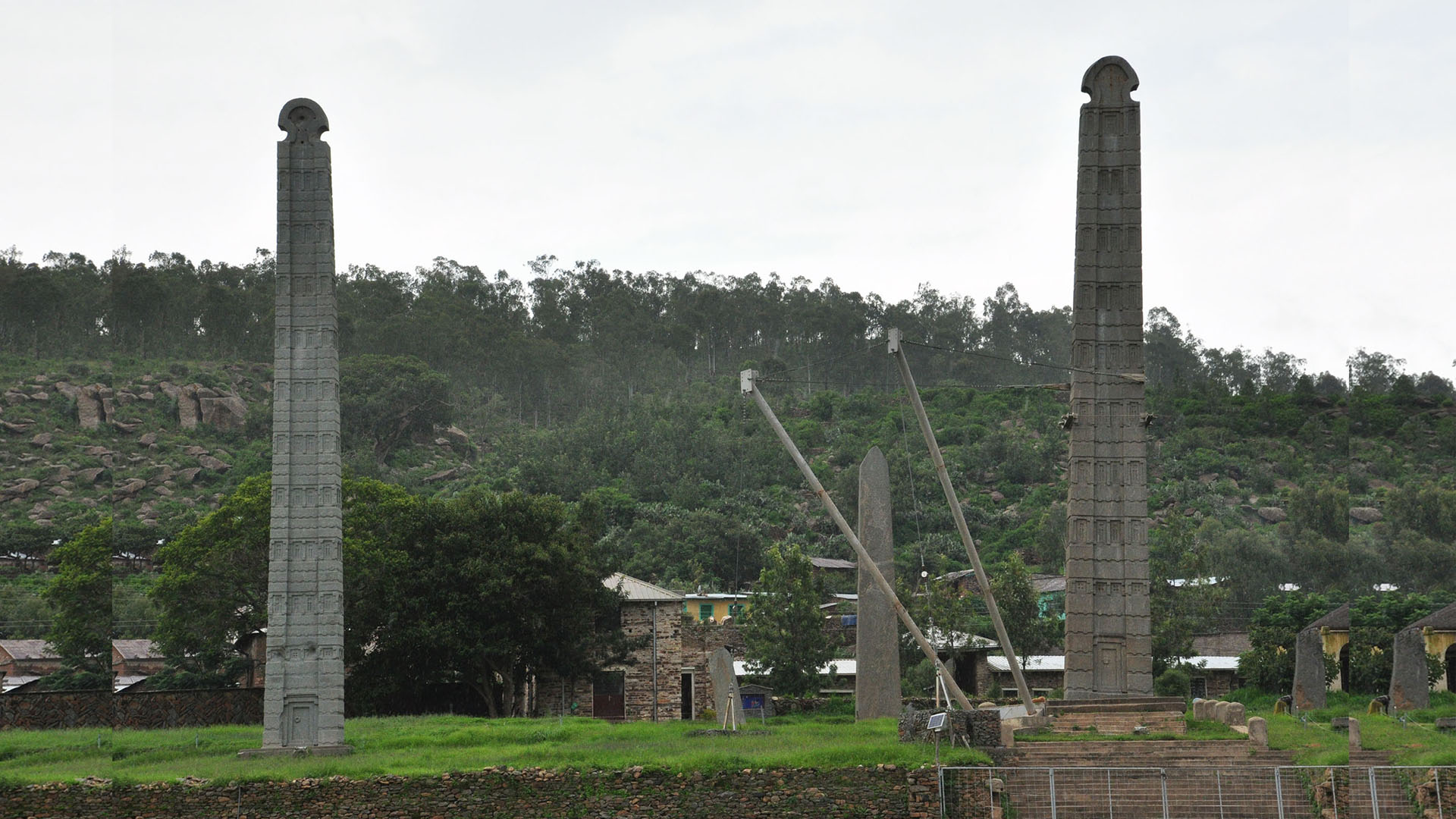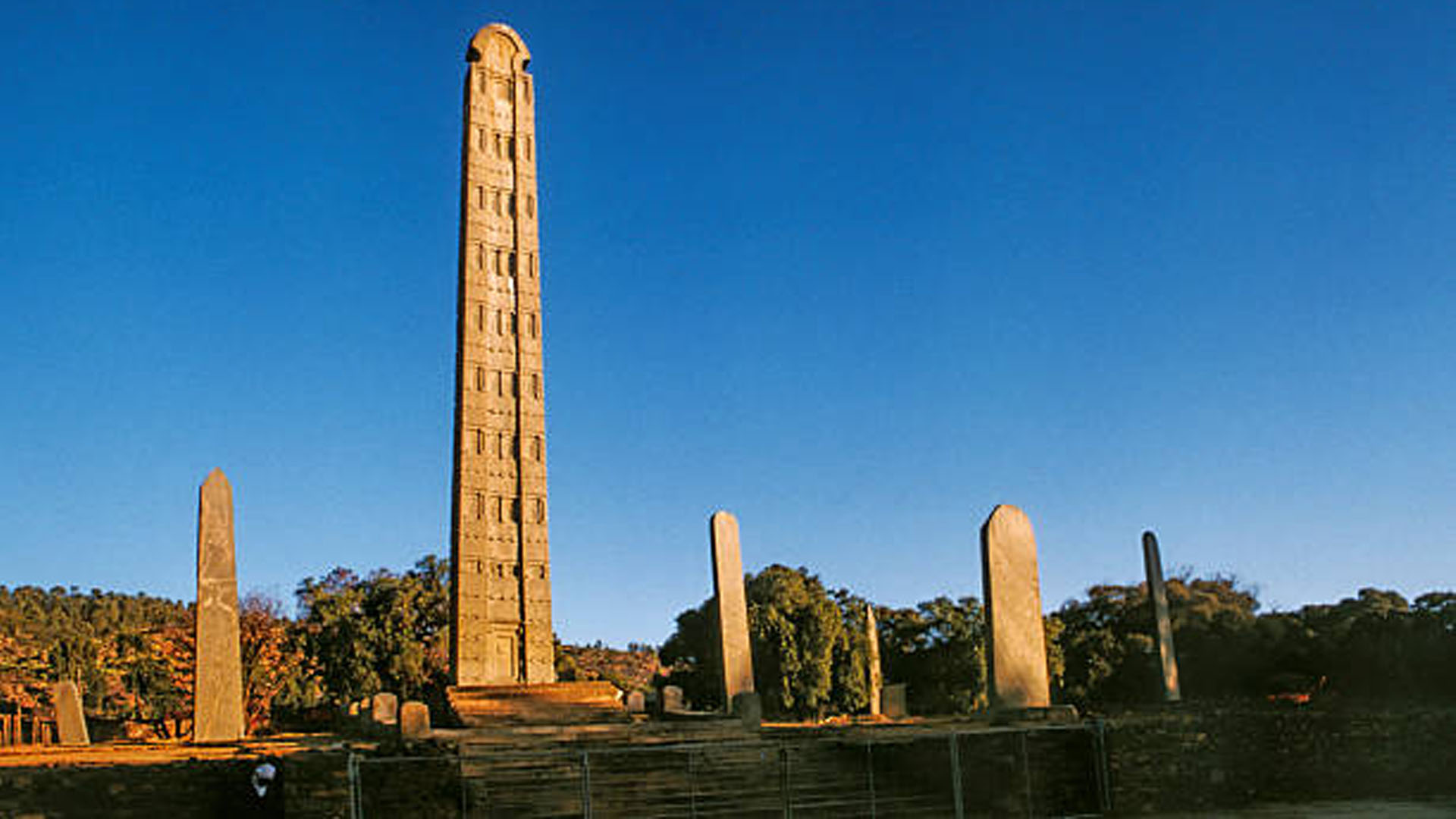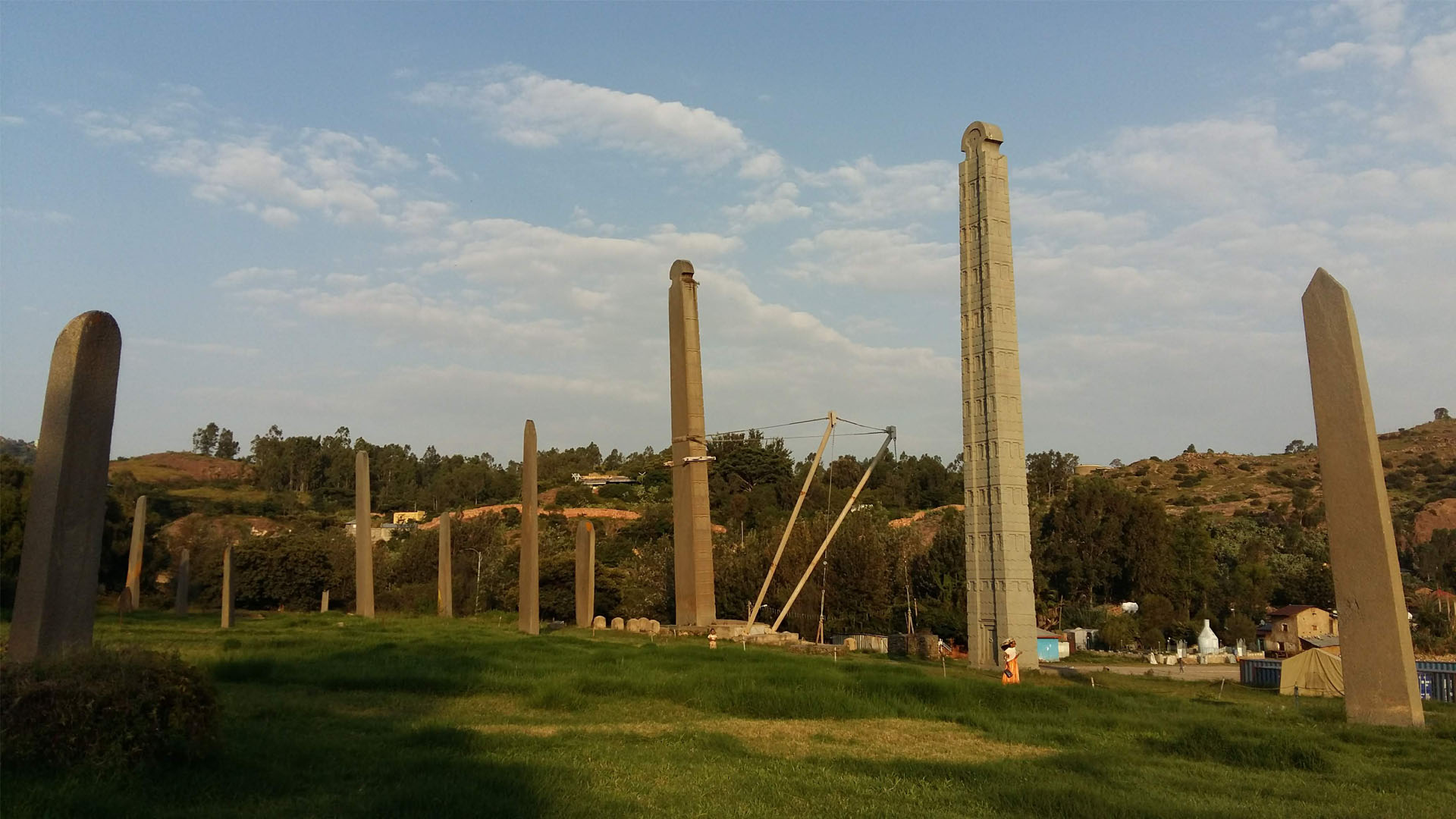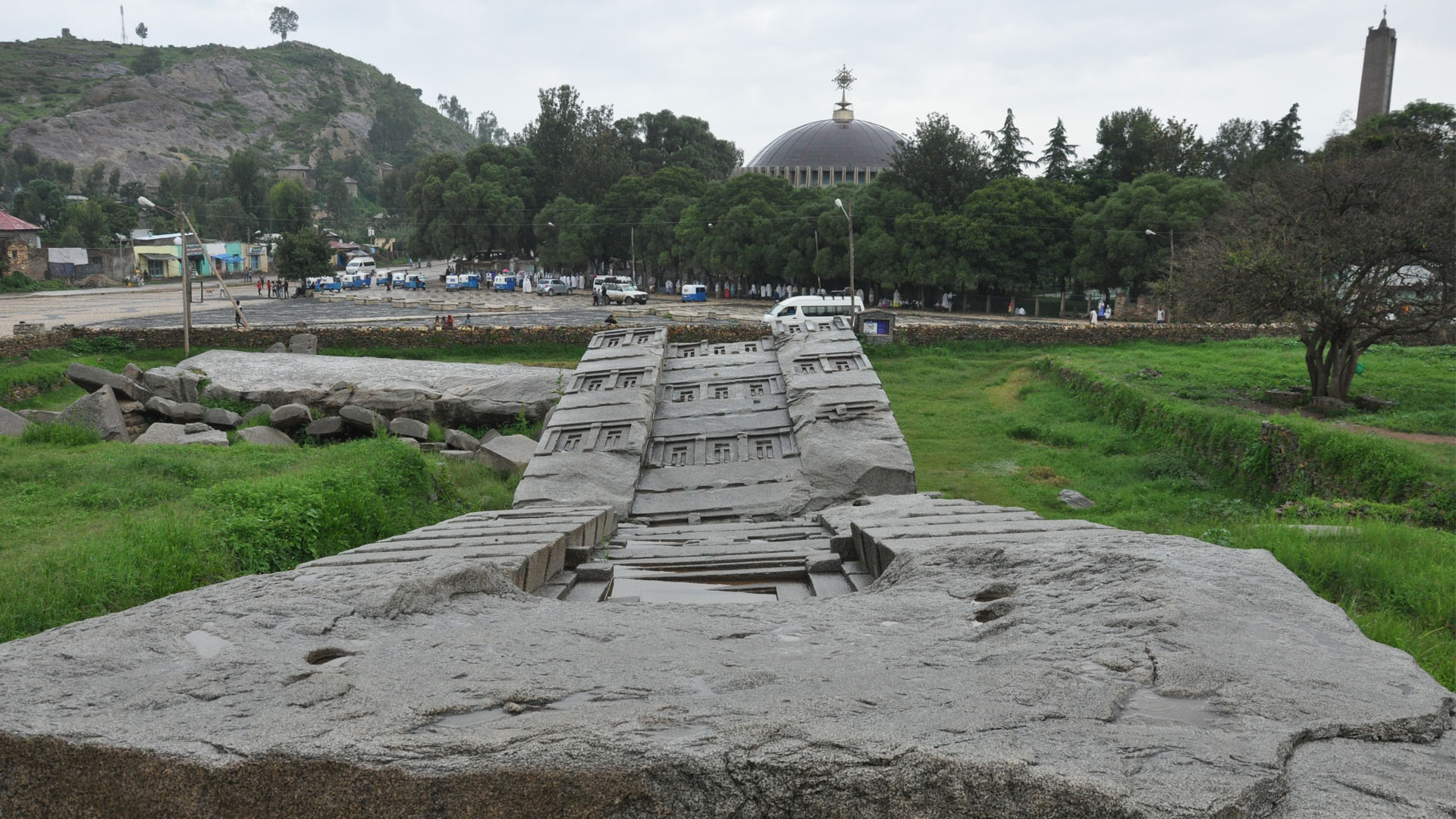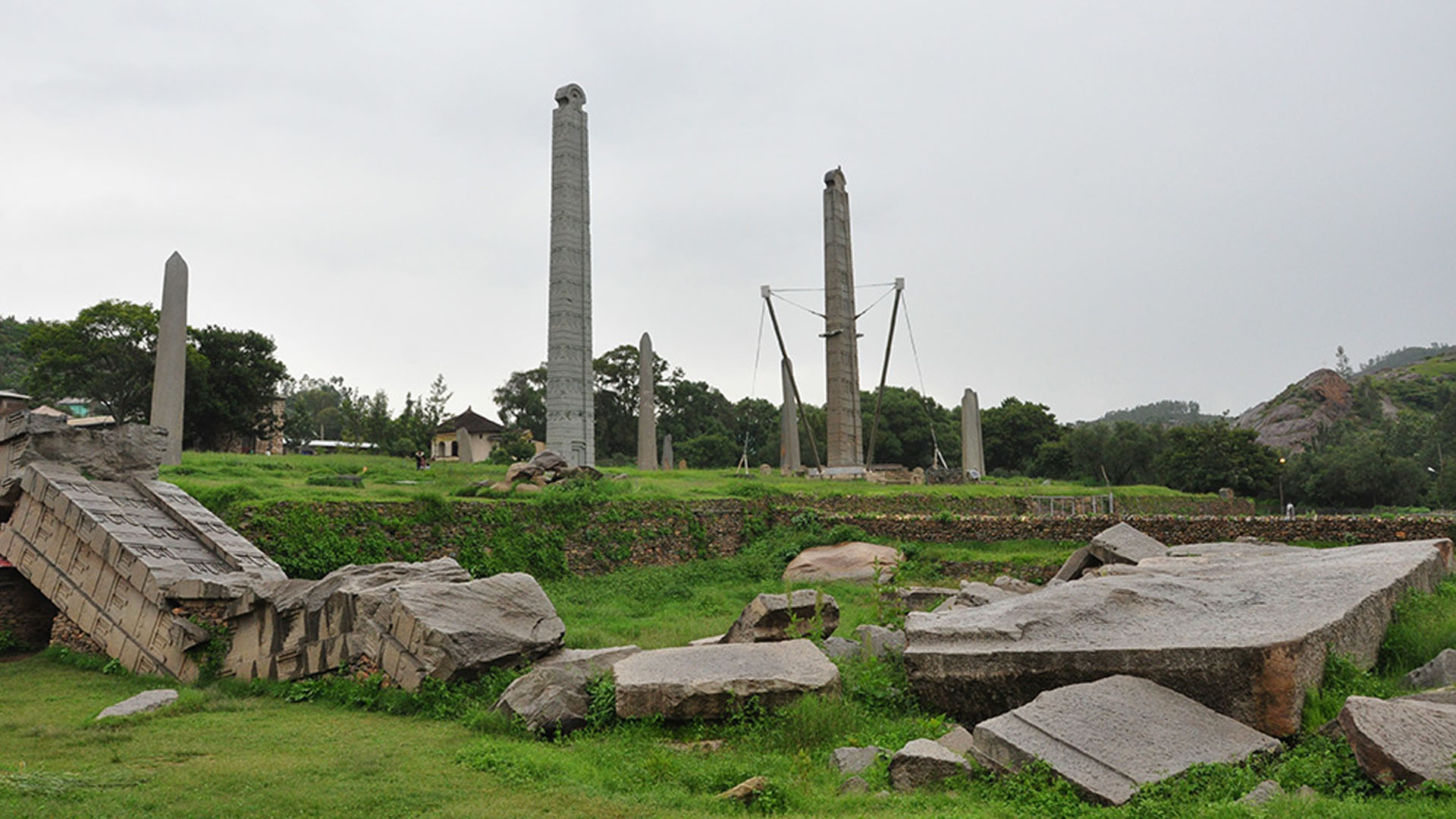The Kingdom of Axum lasted from the first to the eighth centuries AD. Positioned at the crossroads of three continents, Africa, Arabia, and the Mediterranean, it was the most powerful nation between the Roman empire and Persia and it was the first state to formally adopt Christianity around 325 AD. It also briefly granted asylum to some of the early followers of Mohammed in the seventh century. Ruins of palaces, buildings, and tombs cover a wide area in the Tigrai Plateau, the most impressive being the Axum, Tigrai stelae, or obelisks at the stelae field of present-day Axum. Several stelae date between the 3rd and 4th centuries AD. The following are some of the facts behind the obelisks.
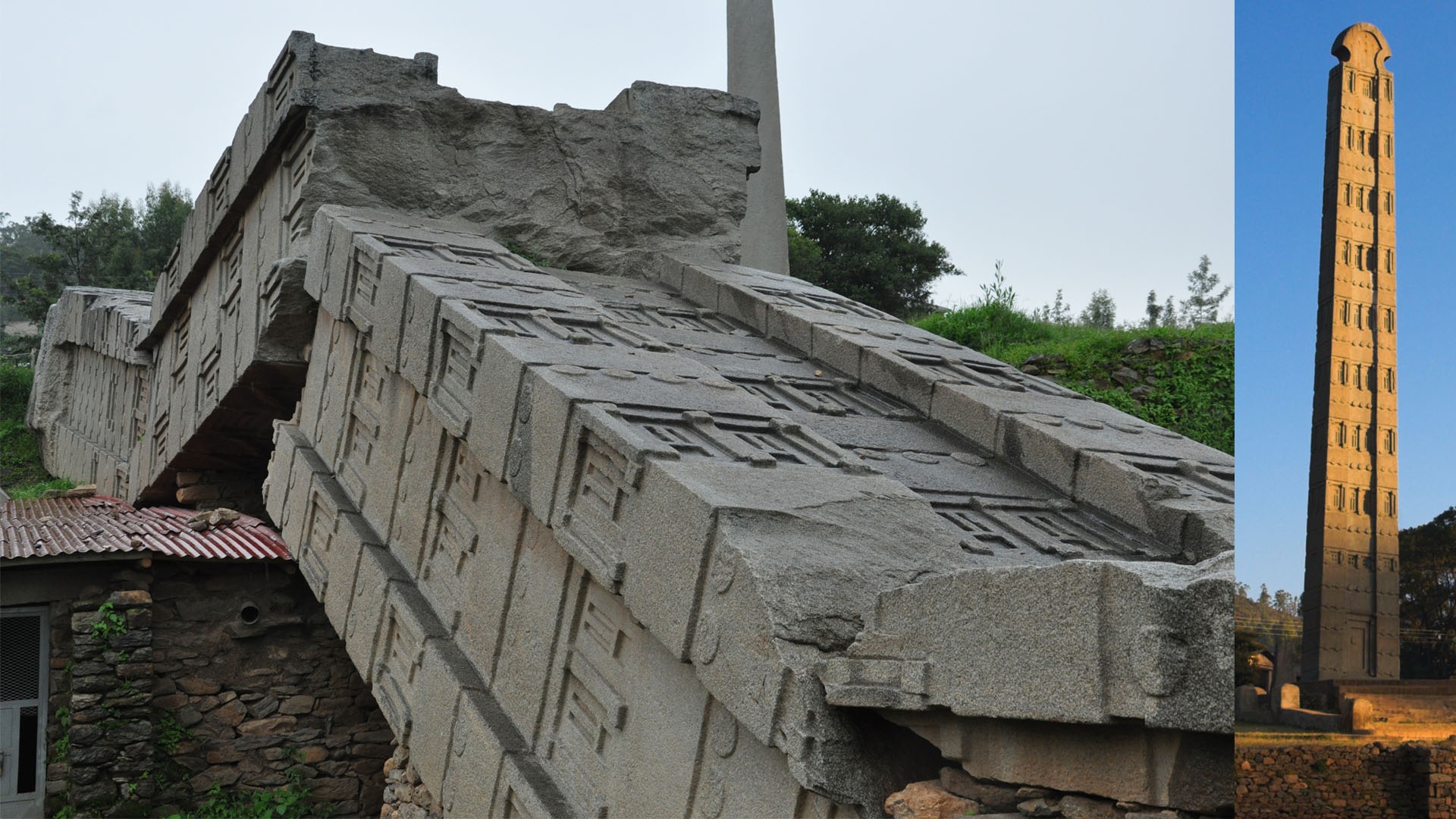
1. What Does Axum Obelisks Mean?
The Obelisks are remarkable time witnesses of Axumite top civilization. It’s a historic language that speaks the peak level of achievements that the Axumite kingdom reached. Axum reached its peak under the leadership of King Ezana who ruled from around 325 CE to 360 CE. During this time, Axum expanded its territory and became a major trade center. It was under King Ezana that Axum conquered the Kingdom of Kush, destroying the city of Meroe. King Ezana also converted to Christianity.
2. How many obelisks are in Axum?
There are more than 100 stone monoliths that stood in Axum at different sites. Big the biggest ones are seven. Raised during the late fourth century, this group of seven stelae was erected around the same time that Axum’s court adopted Christianity, a time of tremendous change in Axumite culture.
3. Why was the Obelisk of Axum built?
From roughly the 1st-8th centuries CE, Axum controlled trade routes between the Mediterranean, Africa, and the Arabian Middle East. In their capital city, Axum, the Axumites grew incredibly wealthy and decided to show off some of that wealth by creating a series of monumental stone pillars technically called stelae.
4. Who built the Axum Obelisk?
The different stelae were curved at different times by different kings starting from the 1st Century. The remarkably standing ones were probably carved and erected during the 4th century CE by subjects of the Kingdom of Axum, an ancient East African civilization. Over the course of time, many of these stelae fell to the ground due to: structural collapse (as, probably, in the case of the Great Stele, measuring 33 m), possibly immediately after their erection; earthquakes (Axum is in a seismic zone); or the military incursions of the Imam Ahmad Gragn during the Ethiopian-Adal War from 1529 to 1543.
5. What rock are the stone obelisks of Axum made of?
Carved from hard granite-like rock, the obelisks were erected as funerary markers, or stelae, for deceased members of the aristocracy. The seven largest and most intricately carved obelisks were erected by Ezana, the King of Axum who converted to Christianity in 325 CE.
6. How old is Axum Obelisk?
The Obelisk of Axum (Tigrigna: ሓወልቲ ኣክሱም) is a 4th-century CE, 24-meter-tall (79-feet) phonolite stele/obelisk, weighing 160 tonnes, in the city of Axum in Tigrai. It is ornamented with two false doors at the base and features decorations resembling windows on all sides.
7. How were the Obelisks at Axum Transported & Erected?
Many say the obelisks at Axum were transported and Erected using elephants and extensive manpower. There is no exact written account though.
8. Why is Axum worth preserving?
Around the third century, Axum became the most powerful empire in the region, as it had great power over the surrounding trade networks, and obtained most of its success from its main exports: gold, glass, ivory, and agricultural and metal goods it obtained the land. Axum is not a specific people’s treasure, it’s World Heritage Site. It portrays one of the rare world history sites in time. The world deserves to learn more from Axum.
9. The Fallen One…?
The 550-ton obelisk (stele) of Axum collapsed and broke into three parts. It is the largest erected single piece of stone known to humankind; around the 4th century AD.
